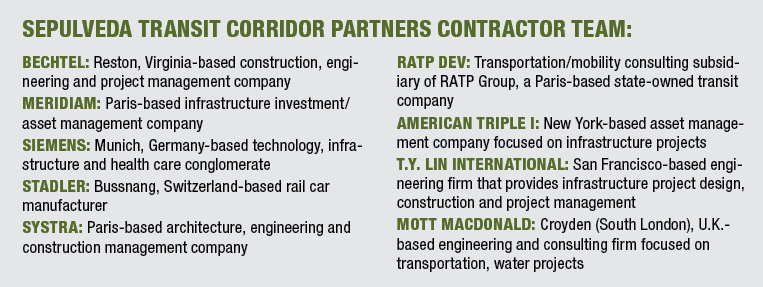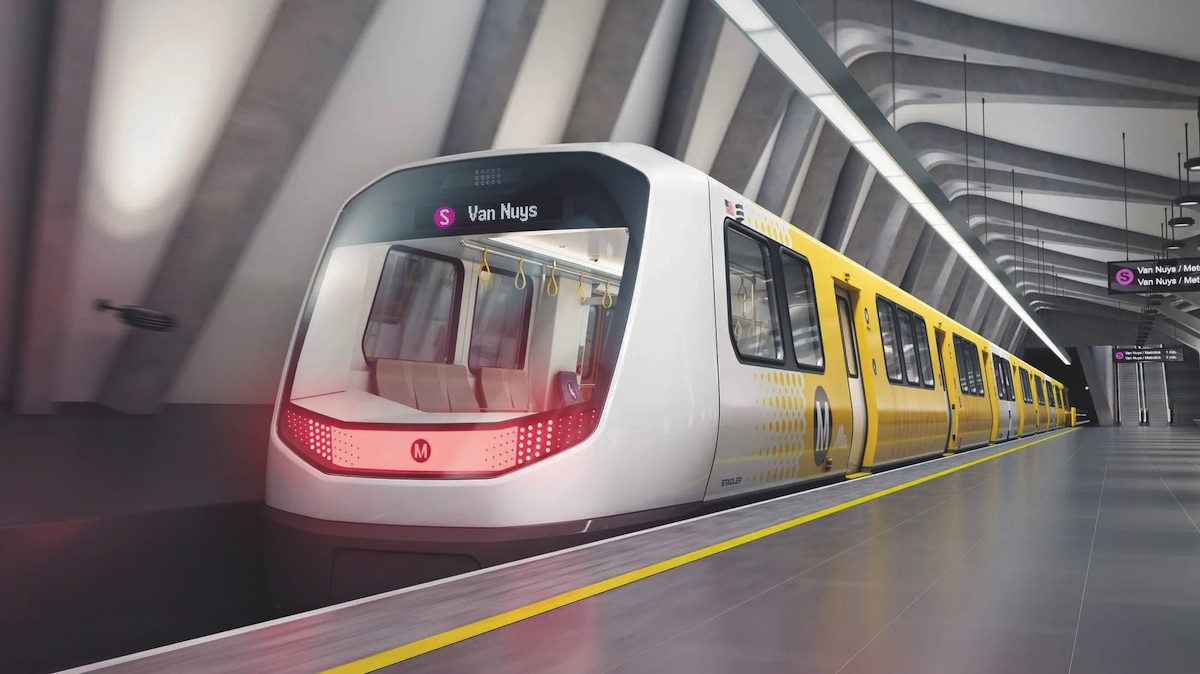The three heavy rail/subway alternatives that the Los Angeles County Metropolitan Transportation Authority is evaluating to connect the San Fernando Valley to L.A.’s Westside are among the most ambitious rail projects Metro has ever considered.
The aim of these alternatives is to provide the smoothest and quickest link between the Valley and the Westside, with travel times of under 20 minutes, less than half the time it now takes to cover that distance by car during rush hour.
Two of the alternatives – which have been assigned numbers 4 and 5 – are being proposed by Sepulveda Transit Corridor Partners, a consortium of nine prime contractors that is led by Reston, Virginia-based engineering giant Bechtel; the consortium has a predevelopment agreement with Metro and nearly $70 million in funds from Metro to work with.
“We are excited to partner with Metro and the community to refine our PDA proposal to potentially ease congestion between the Valley and the Westside with a transit solution that offers fast travel times, a superior passenger experience and complete connections to Metro’s growing system,” Keith Hennessey, president of Bechtel Enterprises, said at the time the predevelopment agreement was awarded in April 2021.
The other route, known as Alternative 6, has been developed by Metro itself, in collaboration with HTA Partners, which is a joint venture between Kansas City-based engineering firm HNTB Corp., Culver City-based environmental consulting firm Terry A. Hayes Associates Inc. and Dallas-based AECOM. Metro awarded the joint venture a $48 million contract in 2020.
Elevated vs. underground

All of these routes would have a station under UCLA but would bypass the Getty Center.
Alternative 4 calls for an elevated rail system from the Van Nuys Metrolink station mostly along Sepulveda Boulevard to just south of Ventura Boulevard and then would tunnel under the Santa Monica Mountains and UCLA/Westwood before returning to the 405 corridor.
Alternative 5 would traverse the same general route but would be entirely underground. As such, it would be the most costly of any of the alternatives Metro is considering; while Metro officials say cost estimates won’t be released until the environmental impact report next spring, outside estimates have put the cost at more than $20 billion.
Both Alternatives 4 and 5 use single-bore tunnels that contain dual tracks to accommodate trains running in different directions.
Alternative 6 would not be along the Sepulveda Pass corridor, but rather, up to two miles to the east, closer to Van Nuys and Beverly Glen boulevards. At just under 13 miles long, it would be the shortest of all the routes under consideration and therefore the route with the quickest travel time of 18 minutes.
For this alternative, Metro would use its traditional double-bore tunnels, with each one carrying trains running in one direction.
Tunnels too deep to reach Getty?

On the issue of why none of these alternatives have a stop at the Getty Center, with its nearly 2 million annual visitors, Metro officials cited the complexity of tunneling in the vicinity.
“The depth (of the tunnels) at that point makes serving the Getty Center difficult,” said Matt Antonelli, deputy chief program management officer for Metro. “At a depth of more than 100 feet, these would be some of the deepest tunnels we would have in our entire system,” he said.
Trying to construct passageways to the surface from tunnels of that depth would be difficult, he added. Combine that with the sharp turn at that point that would be necessary to head southeast to the UCLA campus and it would make for what he termed a “spaghetti alignment.”
Metro officials also note that UCLA, with its 45,000 students and 50,000-plus employees including faculty, is by far the largest single destination that would be served by a route connecting the San Fernando Valley with the Westside.
During the numerous rounds of Metro public hearings and presentations on the Sepulveda Transit Corridor project, opposition has emerged focused on portions of these heavy rail/subway alternatives.
The Sherman Oaks Homeowners Association has come out sharply against the elevated portion of Alternative 4 along Sepulveda Boulevard from Ventura Boulevard and then cutting over to the northern terminus at the Van Nuys Metrolink station. The association has cited what it believes will be intense noise from the elevated train’s steel wheels; it has called for the alternative to be dropped in favor of the entirely underground Alternative 5.
Meanwhile, there has been some opposition from Bel Air residents to all of these heavy rail options. Contrary to the perception that comes with the name Sepulveda Transit Corridor, once these underground routes head south from Mulholland Drive, they actually take a more easterly route, traversing underneath the entire north-south length of the Bel Air neighborhood to get to the UCLA campus.